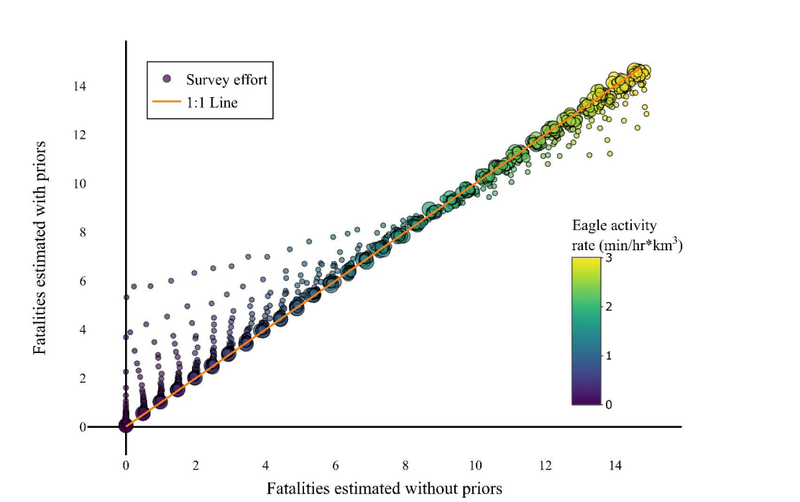

Climate change is one of the greatest threats facing biodiversity, and solutions to reduce carbon emissions are needed to conserve species. Renewable energies are a prominent means to achieve this goal, but the potential for direct harm to wildlife has raised concerns as these technologies proliferate. To protect biodiversity, approaches that facilitate renewable energy development while protecting species are needed. In the United States wind energy developers must obtain a permit for any Bald or Golden eagles that might be killed at a facility. The U.S. Fish & Wildlife Service estimates fatalities using a Bayesian modeling framework, which combines pre-construction eagle surveys with prior information. The ways in which prior information is incorporated and how pre-construction monitoring affects model outcomes can be unclear to regulated entities and other stakeholders, creating uncertainty in the permitting process and retarding both the build-out of renewable energy and conservation measures for eagles. We conducted a simulation study quantifying the differences in predicted eagle fatalities obtained by incorporating prior information and using only site-specific survey data across a range of scenarios, evaluating the impact of survey effort on the magnitude of this effect. We identified predictable relationships between survey effort, eagle activity, facility size and discrepancies between estimates. We also translated these patterns into real-world financial costs, illustrating the interaction between pre-construction surveys, fatality estimates, and compensatory mitigation obligations in determining permit timing and expense.